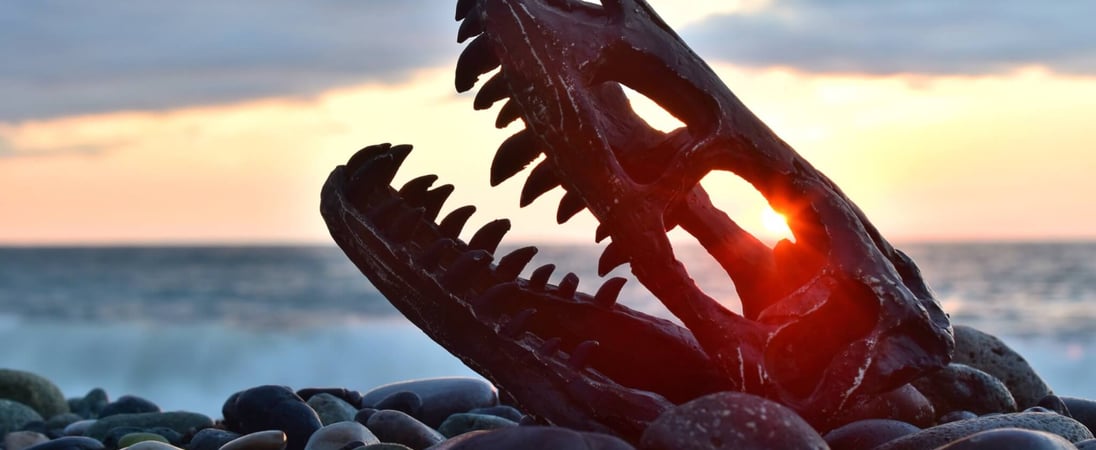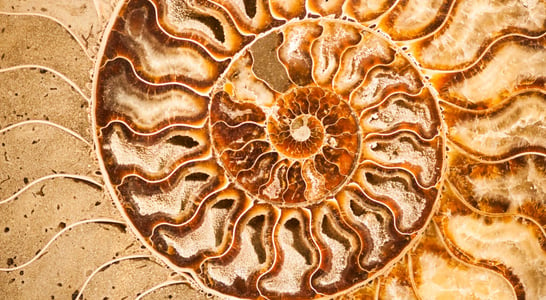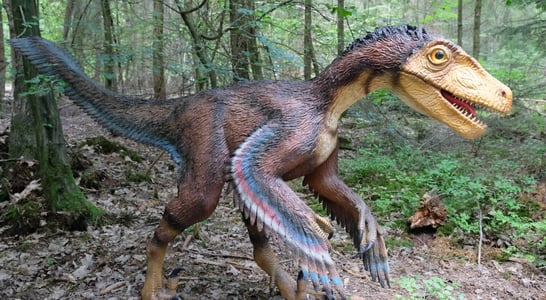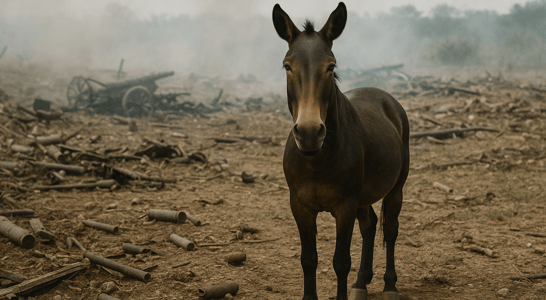
Dinosaur Day
Discover a lost world of colossal creatures, where gigantic predators and gentle giants once roamed the earth.
Dinosaurs have been the subject of scrutiny, fascination and even mysticism for more than 300 years, since the first dinosaur bone was discovered by scientists. Now, Dinosaur Day provides an opportunity for students, teachers and just general fans of dinosaurs to learn more about them and celebrate them just as they deserve!
How to Celebrate Dinosaur Day
Kids and adults alike can enjoy the fun and adventure of Dinosaur Day with tons of different educational and creative activities to choose from:
Visit a Museum with Dinosaurs
What could be better than hanging out with actual dinosaurs and visiting a bunch of ancient dinosaur bones in celebration of Dinosaur Day? This is the day to head over to a museum, whether local or far away, to get up close and personal with these unique and interesting characters.
Here are some of the most interesting dinosaur museums in the world:
- The Field Museum of Natural History (FMNH) in Chicago, Illinois, USA. Featuring dinosaurs from all over the globe, including Antarctica and Madagascar, the Evolving Planet exhibit houses Sue, the world’s largest Tyrannosaurus Rex, weighing 600 pounds and revealing 58 teeth.
- Museum für Naturkunde in Berlin, Germany. This natural history museum hosts a giant collection of bones of many species, particularly those excavated from Tanzania, Africa in the 20th century. This museum is most famous for its 41-foot, 5-inch Brachiosaurus, which is the tallest dinosaur in the world that is on display today.
- Royal Belgian Institute of Natural Science in Brussels, Belgium. The impressive collection of fossils at this museum is home to the largest dinosaur hall in the world. Particularly of note is its collection of 30 Iguanodons, which were the second dinosaur to be classified in the 1800s.
- National Dinosaur Museum in Canberra, Australia. In addition to bones, fossils and footprints, this museum boasts an outdoor garden that features large dinosaur sculptures and even animatronics.
Subscribe to the National Geographic for Kids Magazine
Want the kids to keep up with all that’s going on in the world, including the dinosaur world? The National Geographic Magazine for Kids (sometimes called NatGeo for Kids) is a superb way to keep them interested in learning about all sorts of scientific and natural subjects, including their favorite dinosaurs, of course.
Watch a Movie with Dinosaurs
Those who just want to stay home in celebration of Dinosaur Day can still join in on the fun by taking a look at some of these delightful flicks featuring dinosaurs:
- Jurassic Park (1993). Steven Spielberg directs this classic sci-fi dinosaur movie that has gained a bit of a cult following. This movie is based on a 1990 novel by Michael Crichton and becomes the first in a franchise of several films.
- Night at the Museum (2006). Ben Stiller stars in this fantasy comedy that is about tons of creatures coming alive in the museum at night, including Rexy, the Tyrannosaurus Rex skeleton that is a major exhibit at the Museum of Natural History in New York City, USA.
- The Land Before Time (1988). This heartfelt animated film features an orphaned dinosaur who faces challenges and learns how to survive after meeting up a few friends.
- Land of the Lost (2009). Based on a 1970s television show of the same name, this sci-fi adventure comedy movie stars Will Ferrell as a pompous paleontologist who goes on the adventure of a lifetime and, of course, encounters dinosaurs along the way.
History of Dinosaur Day
While no one knows exactly the dates, some scientists have researched and estimated that non-bird dinosaurs probably were roaming the planet in the time range from 245 to 66 million years ago, which was still millions of years prior to human history.
The era in which dinosaurs lived, the Mesozoic Era, which is a geological age that can be divided into three parts: Triassic, Jurassic and Cretaceous. This may have been the time when the land on earth was originally in one piece, but eventually split into the several pieces which are now referred to as the modern continents.
It is estimated that dinosaurs became extinct from the earth around 65 million years ago, perhaps due to the impact of an asteroid, volcanic eruptions and possible climate change. Sadly, humans now can only make educated guesses about what happened to them.
The first evidence of the existence of dinosaurs on the planet that was discovered by humans happened in 1677 when naturalist and Oxford professor, Robert Plot, found a lone bone from a dinosaur. Since he didn’t really know what it was, Plot’s best guess was that it had come from a giant human.
More than 100 years later, when William Buckland became the first geology professor at Oxford University in the early 1800s, a fossil was identified as being from a dinosaur. It was in 1815 when he discovered teeth, jaw and limb bones that he found more bones in his travels. In 1824, he determined that these bones must have been from some extinct creature.
Buckland originally though this species to be some sort of ancient lizard, which he called “Megalosaurus”. The second fossil to be named was suspected to be like an iguana, so it was called “Iguanodon” in the early 1820s.
Eventually, by 1842, this family of fossils was grouped together by scientist Sir Richard Owen, who called it “Dinosauria”, which translated to “terrible lizard”. Owen would eventually go on to found London’s Natural History Museum in 1881 and that museum is still famous for its dinosaur bone collections today.
It’s no surprise that creatures with such a mysterious history would fascinate and confound even the most intelligent and educated scientists. Today, children and adults of all ages love learning more about the types of dinosaurs, how they lived, what they ate, and so much more.
Dinosaur Day is the perfect way to celebrate and pay heed to this unique and enigmatic species of creatures that preceded humans on this planet.
Dinosaur Day Timeline
245 Million Years Ago
Dinosaurs live on earth
Scientists estimate that dinosaurs may have walked the earth somewhere beginning around this time.[1]
65 Million Years Ago
Dinosaurs go extinct
Sadly, at least 65 million years before humankind, dinosaurs are eradicated through some type of major natural disaster, perhaps an asteroid, volcanic eruptions or climate change.[2]
1677
First dinosaur bone is discovered
Though he doesn’t know it at the time, Robert Plot of Oxford, England, unearths the first dinosaur bone, which he thinks is a bone from a giant human.[3]
1842
Dinosaurs are first given their category name
Oxford geology professor, William Buckland, realizes that many of these ancient bones belong together in one category, so he names them “Dinosauria”.[4]
1993
Jurassic Park is released in theaters
This film by Steven Spielberg combines the genres of science fiction and action to become a hit with audiences.[5]
Dinosaur Day FAQs
Are dinosaurs real?
Yes! Scientific evidence shows that dinosaurs are a group of reptiles that lived on planet earth for many millions of years until they became extinct.[1]
When did dinosaurs go extinct?
Scientists estimate from ancient fossil and bone evidence that dinosaurs went extinct around 65 million years ago.[2]
Did dinosaurs have feathers?
Yes. Preserved specimens of dinosaur feathers were found in China in the 1990s.[3]
Have dinosaurs been found on every continent?
Scientists have found evidence that dinosaurs lived on every continent, but it is suspected this is because all of the land masses were joined together in one during that time.[4]
What killed the dinosaurs?
A theory presented in 1980 caused most scientists to embrace the idea that a giant asteroid killed the dinosaurs, though climate change and volcanic eruptions may also be to blame.[5]
Also on ...
View all holidaysWorld Milk Day
Start your day with a glass of calcium-rich milk, visit a local dairy farm, or see what milk alternatives like soy, oat, or almond milk you might enjoy.
National Go Barefoot Day
Put your feet in direct contact with the Earth by going barefoot, or donate any shoes you don’t wear to those who have no choice but to go barefoot.
National Cancer Survivors Day
Join an organization or event to celebrate those who have fought or are fighting their battle against cancer, and raise awareness of the struggles they face.
World Reef Awareness Day
Join the reef revolution and become a hero for our ocean friends! By spreading awareness and taking action, we can protect these colorful communities and ensure they thrive for generations to come.
We think you may also like...
National Draw a Dinosaur Day
A whole species of animals that once roamed the earth, but have been extinct for many thousands of years, represents the mystery of the world that existed prior to humankind.








